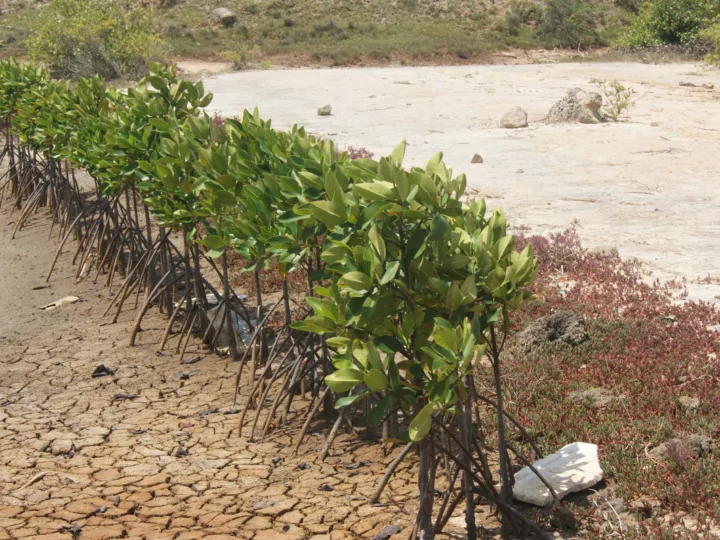

When to act and how? Active vs passive restoration of mangroves in shrimp farming areas in Sri Lanka AH Wijesundara Wayamba University of Sri Lanka
• Shrimp farming is responsible for the decline of mangrove forests • Abandoning culture ponds in large numbers, leaving large areas of unutilized land • New opportunities for restoration has emerged.
Shrimp farming zones Zone 1- Chilaw Zone 2- Arachchikattuwa Zone 3- Mundal Zone 4- Kalpitiya Zone 5- Puttalama • There are 31 sub zones • The present investigation covered 23 sub zones
Objectives • Review the present status of shrimp farming industry in Puttalama district • Map the distribution of abandoned shrimp farms • Estimate the extent of abandoned shrimp farming areas • Develop models for ecological restoration
Approach • Map active and abandoned shrimp farms • Identify the floral composition of selected areas for restoration
Determination of potential restoration areas
Results
Area abandoned Farm Area (ha) Farm Numbers (ha) Allocate for farming Operational Total farms Operational Total 2799 1267 814 524 1532 Zone Active Abandoned % % Arachchikattuwa 66.4 33.6 Mundal 21.9 78.1 Puttalama 49.1 50.8 Kalpitiya 29.5 78.1
Active Abandoned shrimp farms in areas surrounding Kusala, Kottage (zone 2 )
Diversity of mangroves in shrimp farming zones • Core mangroves -12
• Magrove associates and salt marsh vegetation
Other Vegetation
Undisturbed abandoned shrimp farms • Dominants – Excoecaria agallocha – Sueda monoica – Salvadora persica – Rhizophora spp. – Avicennia spp. – Dominant Sapling
Disturbed abandoned shrimp farms – Excoecaria agallocha – A total of 19 species were recorded in abandoned shrimp farms.
Models for restoration • Approaches proposed can broadly be divided into 2 – Abandoned shrimp farms with already occurring natural succession- Passive – Active restoration
Identified areas in need of active restoration • Anavilundawa, Pinkattiya Near to AnawillundawaRamsar Sanctuary • Seguwanthivu,Manathivu and Anaikutti area Near to protected mangrove patches • Muthupanthiya Near to protected mangrove patches
Conclusions • Almost all big farms are abandoned. • 1532 ha are abandoned • Active mobilisation of social groups along with the local skills and knowledge and • Placement of policies and political which will result in meaningful restoration
Acknowledgements • IUCN - Sri Lanka • National Aquaculture Development Authority (NAQDA) – Sri Lanka • Department of Forest – Sri Lanka • Wayamba University of Sri Lanka
Thank you
Recommend
More recommend